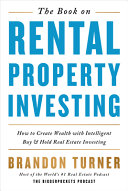

The first main idea of the book revolves around the importance of understanding the rental property market. The author emphasizes that before making any investment, it is crucial to conduct thorough research on the local market conditions. This includes analyzing property values, rental rates, vacancy rates, and the overall economic environment of the area. By doing so, investors can identify lucrative opportunities and avoid potential pitfalls. The book suggests that new investors should familiarize themselves with market trends and demographics to determine the types of properties that are in demand. This foundational knowledge will help investors make informed decisions about where to invest and what types of properties to consider.
Continue readingFinancing is a critical aspect of rental property investing, and the book provides detailed insights into various financing options available to investors. The author discusses traditional mortgages, private lending, and creative financing strategies such as seller financing and lease options. Understanding the pros and cons of each financing method is essential for maximizing cash flow and minimizing risk. Additionally, the book highlights the importance of maintaining a good credit score and building relationships with lenders to secure favorable financing terms. Investors are encouraged to explore multiple financing avenues and to be prepared for unexpected costs that may arise during the purchasing process.
Continue readingEffective property management is vital for the success of rental property investing. The book outlines various strategies for managing rental properties, including tenant screening, lease agreements, and maintenance protocols. The author emphasizes the significance of finding reliable tenants who pay rent on time and take care of the property. This involves conducting thorough background checks and verifying income sources. The book also discusses the importance of clear communication with tenants and establishing a strong landlord-tenant relationship. Furthermore, it provides tips on how to handle common issues such as late payments, property maintenance requests, and tenant disputes.
Continue readingThe author stresses the importance of surrounding oneself with a knowledgeable and experienced real estate team. This team may include real estate agents, property managers, contractors, and attorneys. Each member plays a crucial role in ensuring the success of rental property investments. The book provides guidance on how to select the right team members, emphasizing the need for individuals who are not only skilled but also trustworthy. Building a solid network can help investors navigate challenges more effectively and leverage the expertise of others in the industry. The author encourages readers to invest time in networking and building relationships that can lead to valuable partnerships.
Continue readingUnderstanding cash flow and return on investment (ROI) is essential for evaluating the profitability of rental properties. The book explains how to calculate cash flow by subtracting expenses from rental income. It also introduces the concept of ROI and how to measure it in the context of real estate investments. The author provides formulas and examples to help readers grasp these financial metrics. By understanding cash flow and ROI, investors can make informed decisions about which properties to purchase and how to manage them for maximum profitability. The book encourages readers to keep detailed records of income and expenses to assess the performance of their investments over time.
Continue readingThe book highlights the various tax benefits associated with rental property investing. The author explains how investors can take advantage of deductions for mortgage interest, property taxes, depreciation, and operating expenses. Understanding these tax implications can significantly impact an investor's overall profitability. The book stresses the importance of consulting with a tax professional to ensure compliance with tax laws and to maximize deductions. Additionally, the author discusses strategies for tax planning and how to structure investments to minimize tax liabilities. This knowledge can lead to substantial savings, allowing investors to reinvest in their properties or expand their portfolios.
Continue readingThe final main idea of the book centers on the concept of long-term wealth building through real estate investments. The author argues that rental properties can provide a steady stream of income and appreciate in value over time, making them an excellent vehicle for wealth accumulation. The book encourages investors to adopt a long-term mindset and to view real estate as a means of achieving financial independence. It discusses the importance of reinvesting profits and diversifying investment portfolios to mitigate risks. By focusing on long-term goals and strategies, investors can create a sustainable income source and build a legacy for future generations.
Continue reading